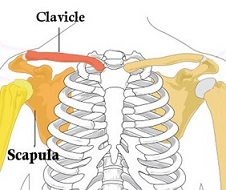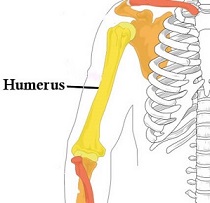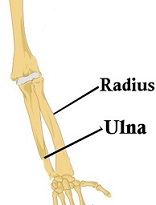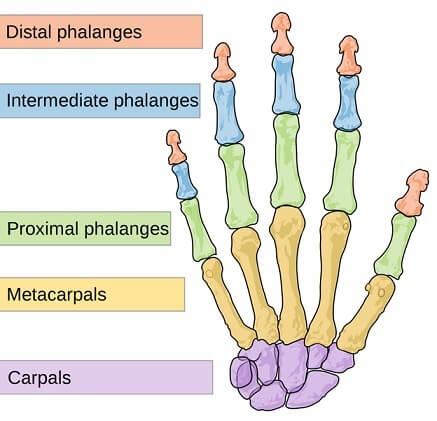The Upper Limb Assignment Help
- Home
- Biology
- Anatomy
- Skeletal System
- The Upper Limb
To connect you with the topic, let’s get the quick revision of the basics. Human skeletal system is divided into axial skeleton and appendicular skeleton. Therefore, the bones of upper limb, lower limb, pectoral girdle (shoulder) and pelvic girdle make the appendicular skeleton of the skeletal system. Focusing on the main heading of this subject, upper limb is divided into three major parts; the arm, the forearm and the hand including wrist. Beside this the bones of pectoral girdle provide the attachment point of upper limb to axial skeleton. Therefore the upper limb of human body is made altogether made of 30 bones excluding the shoulder bone.
If you are confused and unable to connect one point of this topic with the other, get our upper limb Assignment Help provided to you by the professional tutors.
Pectoral girdle:
Pectoral girdle helps in the connection of upper limb with axial skeleton. It consist of clavicle and scapula. Therefore 5 joints and around 20 muscles makes up the pectoral girdle of each side. The joints of pectoral girdle include scapulohumeral joint (connects glenoid cavity of scapula and head of humerus), Acromioclavicular joint (connects acromion of scapula and the clavicle), sternoclavicular joint (connects the sternum and the clavicle articulate), scapulothoracic joint (functional joint between scapula and rib between 2 to 7) and suprahumeral joint (functional joint between head of humerus and coracoacromial ligament).
The Upper Limb Assignment Help By Online Tutoring and Guided Sessions from AssignmentHelp.Net

Clavicle:
- It is also called collar bone.
- Present in the anterior part.
- Clavicle is long and thin bone that is located at the base of neck, superior and anterior to the first rib.
- It supports the truck and allows free movement of arms.
- Clavicle is S-shaped bone that is laterally concave and medially convex. It is divided in sternal end, acromial end and shaft.
Scapula:
- It is also called shoulder blade.
- Connects clavicle to humerus.
- Flat and triangular bone that is located at the back of pectoral girdle.
- Trapezius muscle, levator muscle and rhomboideus muscle (major and minor) helps in the movement of scapula.
- Scapula is divided into three main surface i.e. costal (side facing the ribcage), lateral (side facing the humerus) and posterior (side facing outwards).
Looking for 24/7 anatomy Assignment Help service, call our online experts.

Humerus (the arm bone)
- It is the long bone of upper arms.
- Located between shoulder and elbow joint.
- The proximal end is made of head, anatomical neck, tubercles (greater and lesser).
- Head extends medially and superiorly and therefore articulate with glenoid cavity. Head at proximal end is connected to tubercles by anatomical neck.
- Located laterally is greater tubercles that serve attachment site for three rotator cuff muscles.
- Lesser tubercles on the other hand is medially located and helps in the attachment of last rotator cuff muscles.
- Shaft of humerus helps in attachment of different muscles and also contains some bony landmarks like deltoid, tuberosity and radial groove.
- Distal end of humerus include lateral and medial epicondyle and also a condyle having capitulum and trochlea.
Radius (bones of forearm)
- Long bone of forearm.
- Together with ulna, this bone help in movement of proximal and distal radio-ulnar joints.
- Radius articulates in wrist joint, distal radioulnar joint, proximal radioulnar joint and elbow joint.
- Proximal part of radius has head, neck and radial tuberosity and connects in elbow and proximal radioulnar joints.
- The shaft of radius is triangular shaped consisting of three borders and surfaces respectively.
- In Distal region of radius, the lateral portion is projected as styloid process, likewise a concavity named ulnar notch is present in medial surface. Scaphoid and lunate are two facets present in the distal portion of radius.

At assignmenthelp.net, you can also ask anatomy Assignment Help to receive accurate description and exact diagram for completion of upper limb assignment.
Ulna (bone of forearm)
- It lies parallel to radius.
- Also called stabilizing bone.
- The proximal portion of ulna connects with humerus that allow elbow movement.
- The proximal portion of ulna is classified into olecranon, coronoid process, trochlear process, radial notch and tuberosity.
- The distal portion of ulna connects with radius forming distal radio-ulnar joint.
- The distal portion ends in rounded head.
- Shaft in ulna is triangular shaped having anterior, posterior and medial surface. Also anterior, posterior and interosseous borders are present in the shaft of ulna.

Hand (bones of wrist and hand)
- Bones of hand can be divided into Carpals, metacarpals and Phalanges.
- 8 bones make carpal bone. It can be classified in proximal and distal portion. The bones in proximal end of carpals are scaphoid, lunate, triquetrum and pisiform whereas that of distal end are Trapesium, Trapezoid, capitate and hamate.
- Metacarpals are proximally connected with carpals and distally connected with proximal phalanges. Each Metacarpal extend to five finger of our hand and consist of base, shaft and head.
- The bones of finger are phalanges. Only the thumb has proximal and distal phalanges whereas rest have middle phalanges as well.
Anatomy Assignment Help is provided to biology students from the degree holder tutors of our online site. We charge very nominal rate for upper limb Assignment Help, hence students can call our active member to receive further details.


